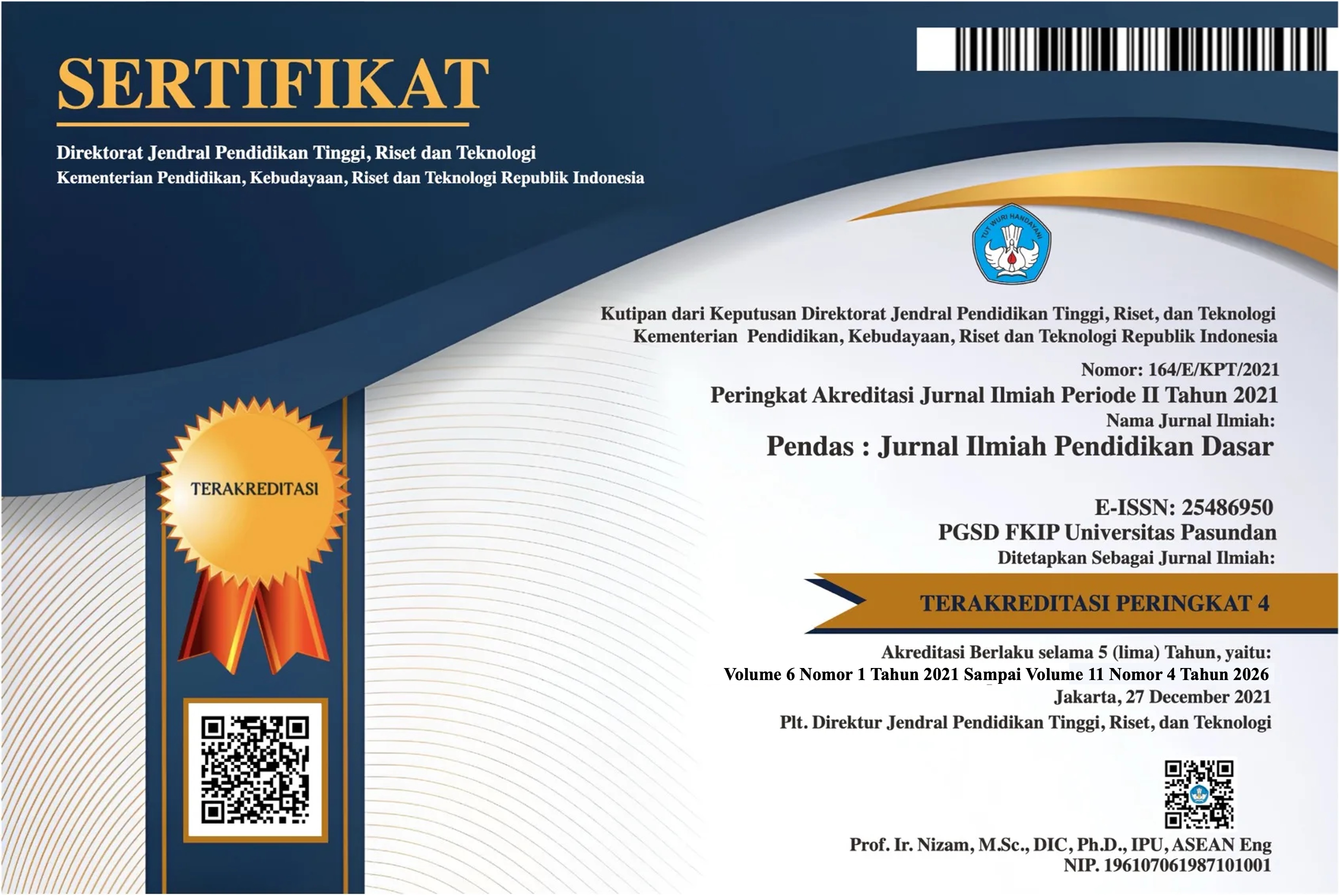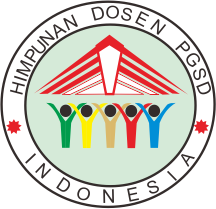IMPLEMENTASI TEORI PERKEMBANGAN KOGNITIF BRUNER PADA PEMBELAJARAN MATEMATIKA TENTANG PERKALIAN DI KELAS II SEKOLAH DASAR
DOI:
https://doi.org/10.23969/jp.v9i03.16003Keywords:
bruner's cognitive theory, mathematics, elementary schoolAbstract
Research was carried out to describe and analyze the application of Bruner's cognitive development theory to mathematics learning about multiplication in elementary schools. Descriptive qualitative research method. The research was conducted at SDN 03 Ngepungsari with the research subjects being class teachers and class II students. Data was collected through interviews, documentation and observation and then analyzed according to the Milles and Hubberman model. The research results show that Bruner's theory of cognitive development can be applied to mathematics learning in elementary schools to enrich students' learning experiences in a more meaningful and contextual way. Through in-depth observations and interviews, it was found that the use of enactive, iconic and symbolic representations allows students to understand the concept of multiplication in stages, starting from manipulating concrete objects to using mathematical symbols, so that various factors that cause problems in learning mathematics can be minimized. Students understand the material more easily, are motivated to discover concepts independently according to their level of cognitive development, are more enthusiastic and active in learning. Thus, Bruner's approach has proven effective in creating an inclusive learning environment and supporting students' cognitive development at the elementary school level.
Downloads
References
Anidar, J. (2017). Teori Belajar Menurut Aliran Kognitif serta Implikasinya dalam Pembelajaran. Jurnal Al-Taujih: Bingkai Bimbingan dan Konseling Islami, 3(2), 8–16. https://ejournal.uinib.ac.id/jurnal/index.php/attaujih/article/view/528
Ardat. (2014). Penerapan Teori Bruner dan Peta Konsep dalam Meningkatkan Penalaran dan Pemahaman Konsep Matematika. Jurnal Tarbiyah, 21(1), 203–221
Bujuri, D. A. (2018). Analisis Perkembangan Kognitif Anak Usia Dasar dan Implikasinya dalam Kegiatan Belajar Mengajar. Literasi, 9(1), 37–50. https://ejournal.almaata.ac.id/index.php/LITERASI/article/view/720
Ervayani, Holisin, I., & Shoffa, S. (2016). Penerapan Teori Belajar Bruner dengan Pendekatan Pendidikan Matematika Realistik di Kelas III SD Muhammadiyah 9 Surabaya. MUST: Journal of Mathematics Education, Science and Technology, 1(1), 113–124. https://doi.org/10.30651/must.v1i1.102
Hatip, A., & Setiawan, W. (2021). Teori Kognitif Bruner dalam Pembelajaran Matematika. Jurnal Pendidikan Matematika, 5(2), 87–97. http://dx.doi.org/10.33087/phi.v5i2.141
Lestari, D. (2014). Penerapan Teori Bruner Untuk Meningkatkan Hasil Belajar Siswa pada Pembelajaran Simetri Lipat di Kelas IV SDN 02 Makmur Jaya Kabupaten Mamuju Utara. Jurnal Kreatif Tadulako 3(2), 129–141. http://library1.nida.ac.th/termpaper6/sd/2554/19755.pdf
Ningsih, R. P., Syahrilfuddin, & Lazim, N. (2020). Application of Jerome Bruner Theory to Improve Mathematics Student Learning Outcomes in Class IVB SD Negeri 158 Pekanbaru. PRIMARY: Jurnal Pendidikan Guru Sekolah Dasar, 9(1), 1–10. http://dx.doi.org/10.33578/jpfkip.v9i1.7363
Pahliwandari, R. (2016). Penerapan Teori Pembelajaran Kognitif dalam Pembelajaran Pendidikan Jasmani dan Kesehatan. Jurnal Pendidikan, 5(2), 154–164.
Putria, H., Maula, L. H., & Uswatun, D. A. (2020). Analisis Proses Pembelajaran dalam Jaringan (DARING) Masa Pandemi COVID-19 pada Guru Sekolah Dasar. Jurnal Basicedu, 4(4), 861–872. https://doi.org/https://doi.org/10.31004/basicedu.v4i4.460
Sugiyono. (2017). Metode Penelitian Kuantitatif, Kualitatif dan R & D. Alfabeta.
Sundari, & Fauziati, E. (2021). Implikasi Teori Belajar Bruner dalam Model Pembelajaran Kurikulum 2013. Jurnal Papeda: Jurnal Publikasi Pendidikan Dasar, 3(2), 128–136. https://doi.org/https://doi.org/10.36232/jurnalpendidikandasar.v3i2.1206
Sutama. (2019). Metode Penelitian Kuantitatif, Kualitatif, PTK, Mix Metod, R & D. Sukoharjo: CV Jasmine.
Sutarto. (2017). Teori Kognatif dan Implikasinya dalam Pembelajaran. Islamic Counselling: Jurnal Bimbingan dan Konseling Islam, 1(2), 1–26. http://journal.iaincurup.ac.id/index.php/JBK/article/view/331
Downloads
Published
Issue
Section
License
Copyright (c) 2024 Pendas : Jurnal Ilmiah Pendidikan Dasar

This work is licensed under a Creative Commons Attribution 4.0 International License.


















